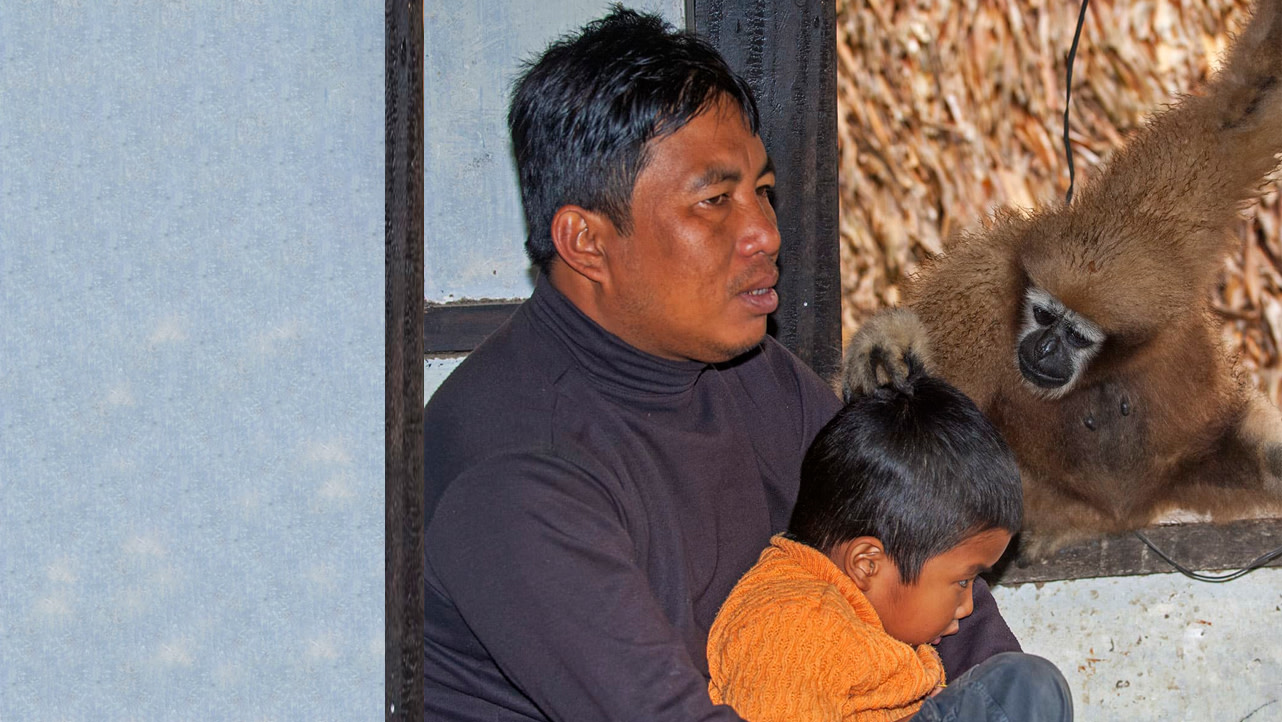 Listen to this article
•
15:34 min
Listen to this article
•
15:34 min
The hoolock gibbon, the only ape species found in India, is an incredibly shy creature, and spotting one in the wild is considered a rare treat. It is strictly arboreal which means it spends most of its life on trees, swinging along high canopies without setting a foot on the forest floor for months. This is exactly what makes places like the Barekuri and Ketetong villages of Assam so special.
Barekuri is bookmarked by wildlife enthusiasts for its population of western hoolock gibbons, a sub-species of the ape found in the northeastern states of Arunachal Pradesh, Meghalaya, and parts of Assam. Once a lush, contiguous forest, Barekuri now encompasses a number of villages, and is home to hundreds of human beings, and about two dozen hoolock gibbons. What makes the gibbons of Barekuri remarkable, is that they have a thriving relationship with the village residents. Wildlife photographer Dhritiman Mukherjee was sure “the story of coexistence was an exaggeration,” when he first heard of them in 2008.
Since then, Mukherjee has returned to photograph the gibbons of Barekuri a number of times. “I think this concept of separate spaces for animals and humans is becoming increasingly unviable,” he said on a telephone interview from Kolkata. “Of course, this cannot apply to all species, but it is possible with some.” Instead of Man vs Wild, he proposes, “Let us look at Man and Wild.”

Cover photo: The documentary has footage of Kaliya wandering in and out of homes in the village, drinking water from the pump, even playing with puppies. In some ways, Kaliya was more human than primate. One of her favourite activities was to pick lice, a service she would extend to most members of the village, from the little babies to toothless grandmas. “She was totally comfortable with the members of the family,” Dhritiman remembers of his time there. “Honestly, I couldn’t believe what I was seeing, because Kaliya is not domesticated, she was coming and going on her own.”



Ketetong no longer has any gibbons (though pictures of Kaliya are still kept in some homes), but Barekuri is still visited by 20-odd western hoolock gibbons that are the pride of the village. “Our only chance is planning,” says Dilip Chhetri, a primatologist working in Assam. “Through planning and community involvement, we can ensure the gibbons have their canopy and food sources, and human needs are also taken into account.”










